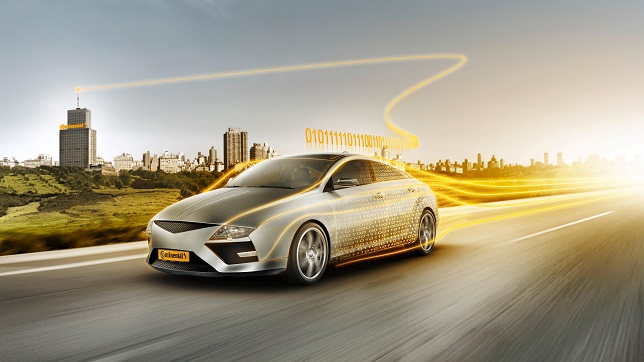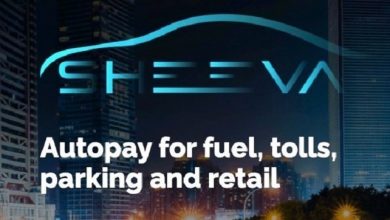Software Transforming The Vehicle Of Tomorrow

Connectivity, autonomous driving, shared mobility and electrification are megatrends transforming the automotive industry disruptively. Tomorrow every vehicle will be connected, and it will be a part of Internet of Things (IoT) that communicates with smart devices and systems outside the vehicle in home, office, other vehicles and infrastructure offering user with personalized, remote, connected and on-demand services. With autonomous driving today’ driver will be tomorrow’s passenger thereby handing over the safe driving independently to the vehicle and user can focus on comfort and entertainment services that the vehicle offers. There is a shift in the individual mobility behavior with the introduction of new mobility services like car sharing, microtransit etc. that offers cost-effective environment-friendly mobility, increases accessibility and convenience. Emission free mobility has become a legislative requirement already forcing the industry to explore alternative drivetrains. How do we drive these trends in the automotive industry? The answer is software-defined vehicle. A story is the best example to illustrate how software can create an outstanding user experience. Rosie and family are travelling to Barcelona for their vacation and book the robo taxi. Taxi arrives at her home with a personalized welcome note on the windscreen and as soon as she enters using the key in her mobile, the entire car interior space is adapted to her preference. Rosie then subscribes the on-demand feature ‘eTravel Companion’ that offers them a guided tour and various proactive, contextualized, and personalized location-based services during their travel. Her husband continues watching the Netflix series that he paused last night at home in the wide screen car entertainment unit while the window changes its transparency, audio sounds amplified, and his seat adjusted to relax thereby providing the theater effects in car. Kids play games in the in-car metaverse systems. Cabin sensing system detects tiredness in Rosie and asks if car should navigate to her favorite coffee chain. Rosie and family stop over for coffee. During this time car has reserved its charging spot to refill its battery. They continue their journey and suddenly the health monitoring system in the car warns Rosie’s father regarding his abnormal pulse rate. In-car digital health assistant connects her online to the doctor and the doctor prescribes a medicine. Rosie orders the medicines in the in-car displays. Car drops Rosie and family at their destination safely. Rosie’s father’s medicine is ready at their hotel doorstep which was delivered via a last mile delivery robot. How that story that offers user safety, convenience, and entertainment is realized? Again, the answer is software.
Car is considered as mobile living space offering an extended home/office to the user. Hence a seamless connectivity and holistic user experience are key for future of mobility. Mobility will soon be considered as a service delivering more on-demand, digitalized and personalized service to the user. User can subscribe for features on-demand and pay per use. User will give consent to collect data in exchange for the convenience. User centric design is influenced by software and software will significantly alter automotive market value chains leading to architecture changes, new operating models, new collaboration models and new business models. The software-defined vehicle increases the lifecycle and value cycle of the vehicle. It reduces the manufacturer’s cost to build and maintain vehicle and provides user a higher resale value. It also opens new revenue streams for data-driven services, features on-demand, shared and fleet services etc. According to The Brainy insights the global automotive software market was USD 24.61 billion in 2021 and is expected to reach ~USD 105.13 billion by 2030. Munich based Berylls Group calculates that that the value of vehicle software per vehicle will triple in the current decade from around EUR 800 to almost EUR 2,400. OEMs, tier-1 and tier-2 suppliers will have new responsibilities, new partnership and collaboration models to cope up with development speed, increasing complexity and sharing cost. OEMs are also increasing their in-house software capability, and few have their own software companies like CARIAD, an automotive software company for Volkswagen group, MBition for Mercedes-Benz cars. New entrants like Tesla take a software centric car development approach unlike traditional automotive OEMs that are hardware centric thereby often leading innovation. As future of mobility is beyond the perimeter of the car with seamless connectivity and holistic user experience, the IT giants like Google, Amazon, Microsoft and Telecommunication giants like T-Mobile, Vodafone, Huawei are contributing to the mobility ecosystem with their products and services. Eclipse foundation has set up an open technology platform for the software-defined vehicle to accelerate innovation of automotive -grade in-car software stacks using open source and open specifications. Arm has set-up Scalable Open Architecture for Embedded Edge (SOAFEE) project, that facilitates collaboration between automakers, semiconductor suppliers, open source and independent software vendors, and cloud technology leaders to create a cloud-native architecture enhanced for mixed-criticality automotive applications. Hardware has become a commodity and innovation & functionality are driven by Software as a result reinventing the new business models of Software as a Product (SaaP) and Software as a Service (SaaS) in automotive. Automotive companies are mastering the journey towards user-centricity via software-centricity and updating their operating model to include agile resulting in continuously value delivery.
The vehicle architecture is evolving from distributed Electronic Control Units (ECU) to scalable vehicle centralized compute platform to cope up with the increasing complexity, functionality, and cost. Traditionally in a car we have ~100 ECUs with each having limited compute power and functionalities isolated in ECUs with tightly integrated software and hardware. Tomorrow with domain centralization, car will have only few high performing computers and zone controllers catering to functions defined by software thereby setting the course for software-defined vehicles. The lines of code in the car today are already 100 million and will grow to ~300 million by 2030. Software-defined vehicle is built on a service-oriented architecture that consists of microservices and containers to decouple the software functions from the hardware. With the decoupling of software and hardware, it can accommodate different development speeds and enable faster innovation cycle. Software-defined vehicle is powered with Artificial Intelligence (AI) and Cloud solutions enabling connectivity, scalability, upgradability, automation, prediction, and supervision. As most of us are aware AI is key element for autonomous mobility; however, it is not limited to autonomous driving. AI also plays a role in improving user experience like the AI-powered digital companion that can serve the user with an intuitive empathetic communication using natural language, cabin sensing AI systems for personalizing vehicle interiors and driver monitoring. Cloud solution enables seamless connected services, data-driven services, predictive vehicle maintenance and more. Over-the-air (OTA) updates in the field enables continuous software deployment for new features, bug fixes, security updates and guarantees shorter time to market. Few automotive players are also standardizing automotive operating system to ensure interoperability and seamless integration like MB.OS (Mercedes Benz Operating System) and VW.OS (Volkswagen Operating System). Overall, the automotive software complexity has increased significantly and to cope up software is architected with modular and reusable modules and delivered with continuous integration and testing. Continental has paved the way in developing the state-of-the-art software-defined-vehicle with its Continental Automotive Edge Framework (CAEdge) – a modular hardware and software scalable compute framework connected to the cloud. CAEdge framework also includes DevOps workbench that provides the toolchain for software development and maintenance. Continental believes in the power of collaboration and has partnered with AWS for cloud computing. Continental is a part of Eclipse foundation initiative and SOAFEE to co-create and co-develop software-defined vehicles. Software is key for the future of mobility and Continental is well prepared for driving the trend.
To summarize software has enabled the automotive industry to be innovative, agile and efficient thereby transforming the vehicle of tomorrow.
Author:

Rosemary Joshy
Head of Global SW Strategy, Innovation and Business Improvement
Continental Automotive GmbH
Rosemary Joshy is the Head of Global SW Strategy, Innovation and Business Improvement for Continental Business Area User Experience. In this role, she spearheads the software strategy, innovation and business improvements across all locations, product portfolio and customers. During her career she has worked with major automotive Tier 1s through the entire spectra of software spanning from Software engineer to Head of Software Development Center.
Published in Telematics Wire




